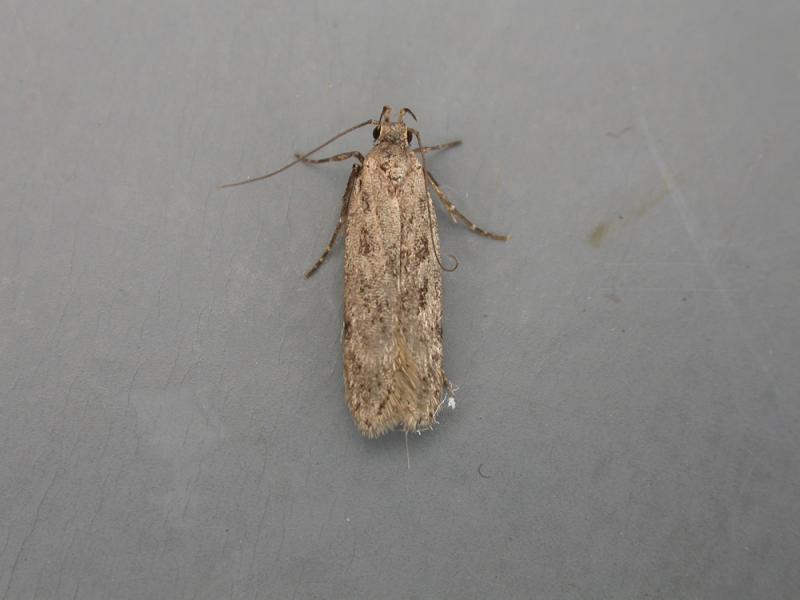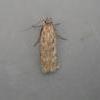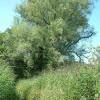35.103 Gelechia cuneatella Douglas, 1852
Status and Distribution
Scarce, but possibly under-recorded, occuring in several widely scattered localities in England from Kent to Northumberland, usually as singletons. Six were found at a site in Warwickshire during the summer and early autumn of 2007.
Stainton (1854) Insecta Britannica, notes a specimen is in Mr. Bedell's collection, taken in Tower-street , some years back, but with no more detail. The first record with more precise details is from Hackney Marshes in September 1853 by T. Boyd.
In Emmet & Langmaid (2002), The Moths of Great Britain and Ireland Vol 4 (2), mention is made of an Oxford district record by Waters in 1929. M. Corley (pers. comm.) has examined the document and found the reference relates to a record that is listed as unaccepted (by Waters) and which was from a location in VC22 (Berkshire). Additionally, Martin mentions that in the Oxfordshire VCH (1939) there is a VC23 entry for G. cuneatella: “Finstock (H.)” where 'H.' refers to a manuscript list by W. Holland and A.H. Hamm. Martin considers this unlikely to be correct, and as far as he is aware there is no modern VC23 record. As a result, the VC23 dot shown in Vol. 4 (2) is considered unverified.

Provisional map
Foodplant and Larval Feeding Signs
Salix alba (white willow), see plant distribution map, and Salix fragilis (crack willow) are listed in Emmet, A. M. & Langmaid, J. R., 2002, The Moths and Butterflies of Great Britain and Ireland Vol. 4 (2)., as 'having been recorded in the past'. In Europe it has been recorded on Salix alba (white willow) and Salix caprea (goat willow).
Feeds within spun leaves.
Finding the Moth
Larva: spins the leaves. The larval feeding period in Europe is given as late April to early June, whilst in England it has been reported as July in Meyrick, E, 1928, A revised Handbook of Lepidoptera, and Emmet, A. M. 1988, A Field Guide to the Smaller British Lepidoptera and as June and July in Emmet, A. M. & Langmaid, J. R., 2002, The Moths and Butterflies of Great Britain and Ireland Vol. 4 (2). Further investigation is required.
Mention is made in Emmet, A. M., 1981, The Smaller Moths of Essex, of a specimen being bred from near Flatford Mill, emerging on 22nd June 1975. However there is some confusion about the Flatford record as Agassiz, D. J. L., in his 1983 Microlepidoptera Review advises the Flatford record relates to G. scotinella.
Adult: rests on the trunks of willows and comes to light.
Similar Species
Similar to Gelechia muscosella and forms of G. soroculella (or worn specimens) which lack the strongly white-ringed spots at one third on the forewing. Of these two, only G. muscosella has the upper surface of the basal three abdominal segments ochreous-yellow present in G. cuneatella. The elongate forewings and slightly triangular shaped segment two of the labial palps in G. cuneatella may assist with picking out potential specimens. Dissection is usually needed to confirm this species particularly as it is often worn when found at light.
Single brooded from late July to the end of September.
Earliest: 27th July 2007 (VC38)
Latest: 3rd October 2007 (VC38)




